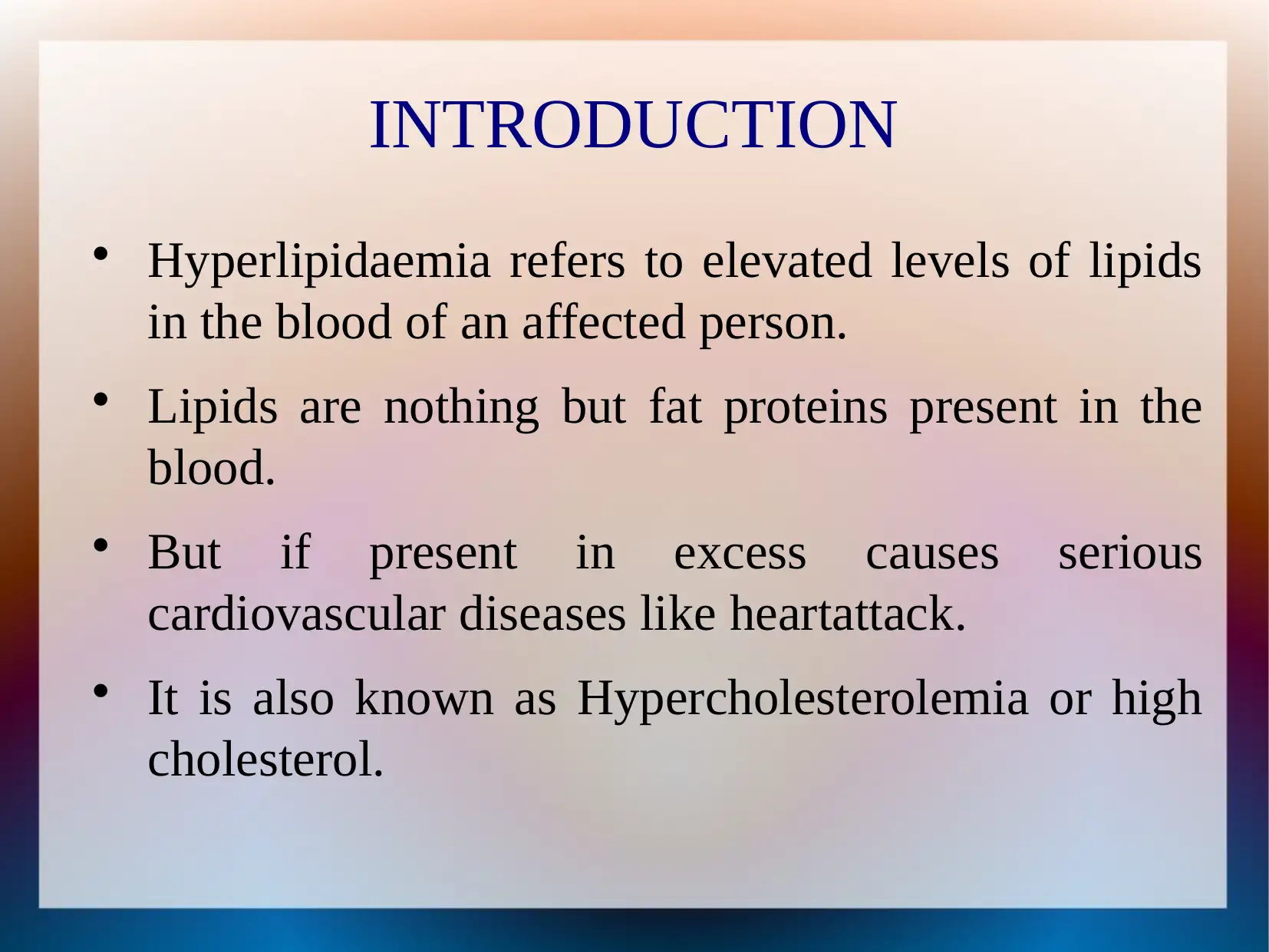Comprehensive Report on Hyperlipidemia: Causes, Risks, and Care Plan
VerifiedAdded on 2023/04/23
|27
|1320
|238
Report
AI Summary
This report provides an in-depth analysis of hyperlipidemia, a condition characterized by elevated lipid levels in the blood. It explores the genetic factors contributing to hyperlipidemia, including mutations in genes like LRP6, and discusses the familial inheritance patterns. The report details the symptoms, risk assessment strategies, and clinical judgment required for effective management. Interventions such as dietary modifications, including reducing saturated fats and increasing dietary fiber, are emphasized. The importance of consulting dieticians and lipid specialists is highlighted, along with a comprehensive care plan focusing on reducing sodium and saturated fat intake. The report concludes by underscoring the significance of lifestyle changes and proper medical guidance in managing hyperlipidemia and preventing associated cardiovascular diseases. Desklib offers a wealth of similar solved assignments and study resources for students.
1 out of 27


















![[object Object]](/_next/static/media/star-bottom.7253800d.svg)